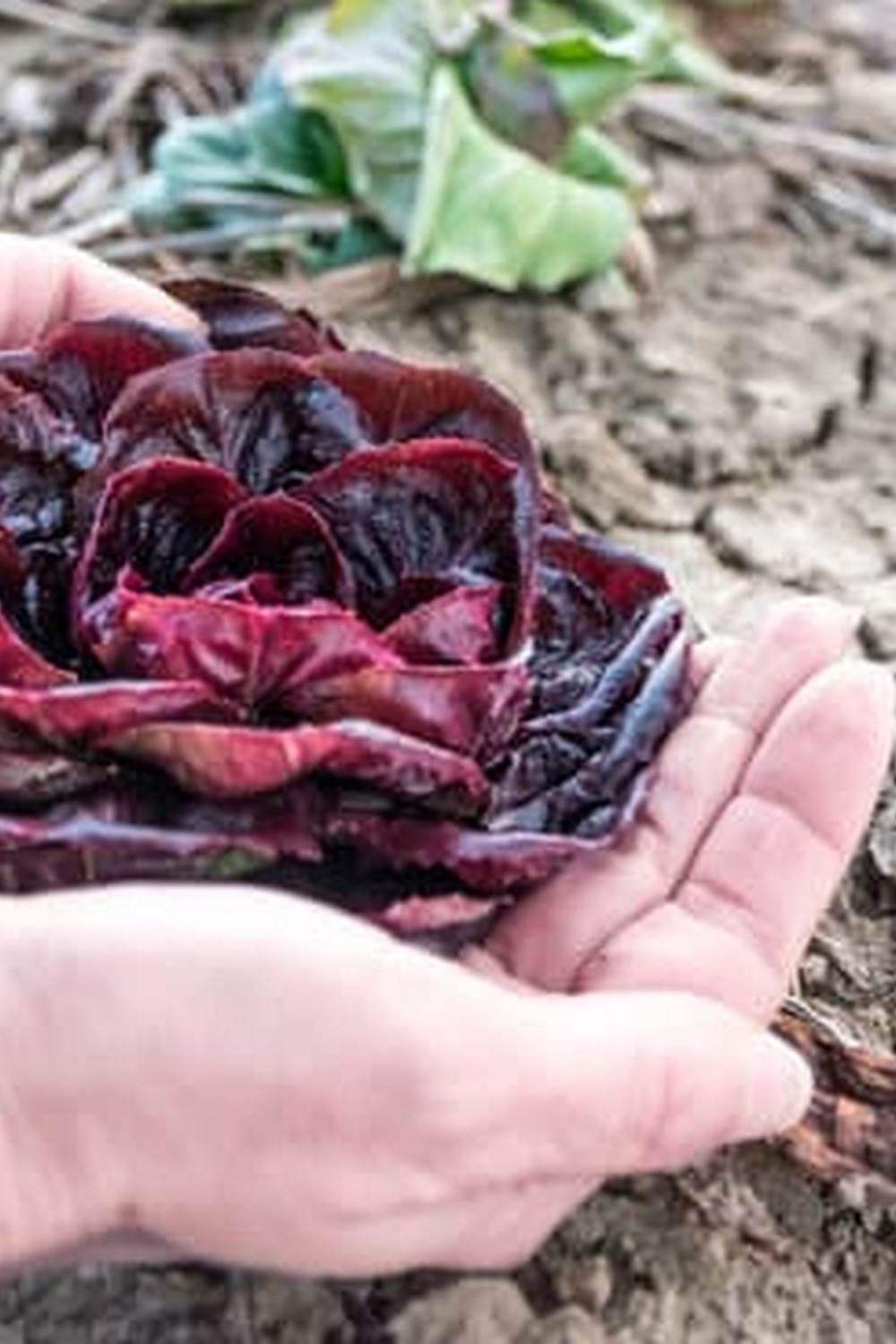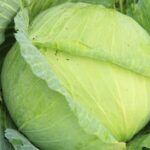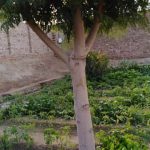The Vegetable Gardener’s Bible by Edward C. Smit has become a cornerstone resource for both novice and experienced gardeners seeking to cultivate vibrant, bountiful vegetable gardens. Offering a wealth of knowledge and practical guidance, Smit’s book has brought about a transformative impact on the world of vegetable gardening.
With its comprehensive coverage of essential concepts and teachings, The Vegetable Gardener’s Bible serves as an indispensable tool for anyone looking to enhance their gardening skills and produce a thriving garden.
Edward C. Smit, a renowned expert in gardening with years of experience, penned The Vegetable Gardener’s Bible as a comprehensive guide to help individuals successfully grow their own vegetables. The book provides an in-depth overview of various aspects of vegetable gardening, from planning and design to soil health management, pest control, crop rotation, harvesting tips, and more.
Through this well-rounded approach, Smit empowers readers with the knowledge and confidence needed to achieve fruitful results in their own gardens.
Upon delving into The Vegetable Gardener’s Bible, readers gain access to valuable insights and tips that can significantly impact their approach to vegetable gardening. By exploring the book’s teachings on proper planning and design, soil health and nutrient management, pest control techniques, seasonal planting strategies, and effective harvesting methods, individuals can elevate their gardening skills and overcome common challenges they may encounter.
This not only leads to better harvests but also fosters a deeper appreciation for the art of sustainable vegetable cultivation.
Book Overview
The Vegetable Gardener’s Bible, written by Edward C. Smith, is a comprehensive and invaluable resource for both novice and experienced gardeners. With over 40 years of experience in organic gardening, Smith imparts a wealth of knowledge and practical advice that covers various aspects of vegetable gardening. The book not only reflects the author’s expertise but also his passion for sustainable and bountiful gardening practices.
Smith’s background in horticulture and his extensive experience as a vegetable gardener make him an authoritative voice in the gardening community. The Vegetable Gardener’s Bible offers an in-depth exploration of topics such as soil health, pest control, seasonal planting, crop rotation, harvesting tips, and much more. This makes it a must-have guide for anyone looking to enhance their understanding of vegetable gardening and improve their skills in this area.
One of the remarkable aspects of The Vegetable Gardener’s Bible is its comprehensive nature. It covers a wide range of vegetables, from tomatoes and peppers to potatoes and squash.
Additionally, it provides detailed information on each vegetable’s specific needs, including ideal growing conditions, planting methods, maintenance tips, common issues to watch out for, and recommended varieties. The book offers practical solutions to common garden challenges while promoting eco-friendly practices that benefit both the environment and the quality of the harvest.
| Topic | Details |
|---|---|
| Author | Edward C. Smith – Background in horticulture and over 40 years of experience in organic gardening |
| Coverage | Comprehensive information on various aspects of vegetable gardening |
| Variety Coverage | Detailed information on a wide range of vegetables and their specific needs |
Key Lessons
The Vegetable Gardener’s Bible by Edward C. Smit is a comprehensive guide that has had a significant impact on vegetable gardening enthusiasts. This book has become a go-to resource for both beginners and experienced gardeners, offering valuable insights and practical tips for successful vegetable cultivation. The teachings of Edward C. Smit have revolutionized the way people approach vegetable gardening, emphasizing sustainable and natural methods that promote healthy plant growth and bountiful harvests.
Embracing Organic Principles
One of the key lessons from The Vegetable Gardener’s Bible is the emphasis on organic gardening principles. The book advocates for sustainable and environmentally-friendly practices, including natural pest control, composting, and soil enrichment through organic matter. By adopting these principles, gardeners can cultivate healthier plants while minimizing their impact on the environment.
Maximizing Space and Yield
Edward C. Smit’s book also provides valuable insights on maximizing space in the garden to increase yield. From vertical gardening techniques to companion planting strategies, The Vegetable Gardener’s Bible offers innovative approaches to make the most of limited space while ensuring abundant harvests.
Seasonal Planning and Crop Rotation
Another important lesson from the book is the significance of seasonal planting and crop rotation. By understanding the specific needs of different crops throughout the year and implementing a strategic crop rotation plan, gardeners can maintain soil health, manage pests, and optimize overall productivity in their vegetable gardens.
Overall, the teachings of The Vegetable Gardener’s Bible serve as a guiding light for those looking to elevate their vegetable gardening skills. By embracing the insights and tips shared in this book, individuals can embark on a journey towards more sustainable, productive, and fulfilling vegetable cultivation practices.
Designing and Planning Your Garden
Planning and designing a vegetable garden is a crucial step in ensuring its success and productivity. In “The Vegetable Gardener’s Bible” by Edward C. Smit, the author emphasizes the significance of proper planning and design in creating a thriving garden. Smit’s comprehensive guide offers valuable advice on how to effectively plan and design a vegetable garden to maximize yields and efficiency.
One of the key teachings from “The Vegetable Gardener’s Bible” is the importance of considering factors such as sunlight, water access, and soil quality when designing a garden layout. Smit provides insights on how to assess these factors and create an optimal layout that takes advantage of natural resources while addressing potential limitations.
The book also delves into various gardening methods, such as raised beds or container gardening, offering readers flexibility in designing their gardens to suit their individual needs and space constraints.
Moreover, “The Vegetable Gardener’s Bible” highlights the significance of crop rotation and companion planting in garden planning. Smit provides guidance on how to strategically rotate crops to maintain soil fertility, manage pests, and prevent disease buildup.
The book also introduces the concept of companion planting – strategically placing compatible plant species together for mutual benefits such as pest control or improved nutrient uptake. These techniques are essential aspects of garden planning that can significantly impact the overall health and productivity of a vegetable garden.
In essence, “The Vegetable Gardener’s Bible” serves as an invaluable resource for both novice and experienced gardeners when it comes to designing and planning successful vegetable gardens. By incorporating Smit’s teachings on layout design, crop rotation, and companion planting, readers can lay a strong foundation for their gardens’ health and productivity”.
| Aspect | Detail |
|---|---|
| Suitable layout | Assessing factors like sunlight, water access, soil quality for optimal layout |
| Gardening methods | Raised beds or container gardening for maximizing space |
| Crop rotation & companion planting | Strategic techniques for maximizing soil fertility & managing pests |
Soil Health and Nutrient Management
The importance of soil health and effective nutrient management cannot be overstated when it comes to successful vegetable gardening. This is an area where The Vegetable Gardener’s Bible by Edward C. Smit truly shines, offering valuable insights and practical guidance for gardeners looking to optimize their soil and nutrient conditions for vibrant and productive crops.
Optimizing Soil Health
The Vegetable Gardener’s Bible emphasizes the significance of healthy soil as the foundation for a thriving garden. Edward C. Smit provides in-depth information on the composition of fertile soil, emphasizing the need for proper drainage, aeration, and organic matter for optimal plant growth. The book also delves into the importance of maintaining soil pH levels and offers practical advice on how to assess and improve the quality of one’s garden soil.
Managing Nutrients for Optimal Growth
In addition to focusing on soil health, The Vegetable Gardener’s Bible presents comprehensive strategies for effectively managing nutrients in the garden. From understanding the specific nutritional requirements of different vegetable crops to implementing organic fertilizers and amendments, Edward C. Smit’s book offers valuable recommendations for ensuring that plants receive the essential nutrients they need for vigorous growth and bountiful yields.
Importance of Soil Testing
One key takeaway from The Vegetable Gardener’s Bible is the emphasis on regular soil testing as a critical tool for monitoring and managing nutrient levels in the garden. By guiding readers through the process of conducting soil tests and interpreting results, Smit empowers vegetable gardeners to make informed decisions about fertilization and soil amendment, ultimately leading to more balanced and fruitful growing conditions.
By embracing the teachings of The Vegetable Gardener’s Bible on soil health and nutrient management, gardeners can establish a solid foundation for success in their vegetable gardens. Whether it involves improving soil structure, optimizing nutrient levels, or conducting regular soil tests, the book provides valuable knowledge that can significantly enhance the overall health and productivity of any garden.
Pest and Disease Control
The Vegetable Gardener’s Bible by Edward C. Smit is a comprehensive guide that addresses every aspect of vegetable gardening, including pest and disease control. In this section, we will explore the valuable insights and recommendations from the book on identifying, managing, and preventing common pests and diseases that can affect vegetable gardens.
One of the key lessons from The Vegetable Gardener’s Bible is the emphasis on natural and sustainable methods for pest and disease control. The book advocates for an ecological approach to gardening, encouraging gardeners to work with nature rather than against it.
This means promoting biodiversity, attracting beneficial insects, and using organic solutions to combat pests and diseases. By following these principles, gardeners can create a healthy and balanced ecosystem within their gardens, reducing the need for harmful chemical interventions.
In addition to natural methods, The Vegetable Gardener’s Bible provides practical guidance on identifying specific pests and diseases that commonly plague vegetable gardens. From aphids to blight, the book offers detailed information on how to recognize these problems and take appropriate action.
By arming readers with this knowledge, the book empowers them to be proactive in monitoring their plants and addressing issues before they escalate. Overall, The Vegetable Gardener’s Bible equips gardeners with the tools they need to effectively manage pest and disease control in a sustainable and environmentally friendly manner.
Seasonal Planting and Crop Rotation
In The Vegetable Gardener’s Bible by Edward C Smit, one of the key lessons emphasized is the importance of seasonal planting and crop rotation for a successful vegetable garden. This section of the book provides valuable insights and recommendations on how to effectively plan and rotate crops throughout the year.
Seasonal planting refers to the practice of selecting and planting specific vegetables based on the season, while crop rotation involves switching the location of crops from one season to another to optimize soil health and minimize pest and disease issues.
Key lessons from The Vegetable Gardener’s Bible highlight the significance of understanding each vegetable’s preferred growing season. By following recommended planting schedules, vegetable gardeners can maximize their yields and ensure that each plant thrives in its ideal climate conditions.
Furthermore, the book provides guidance on creating a well-structured planting calendar, taking into account factors such as frost dates, temperature variations, and daylight hours. This systematic approach not only supports healthier plant growth but also contributes to a more efficient and organized gardening experience.
In addition to seasonal planting, The Vegetable Gardener’s Bible underscores the benefits of crop rotation in maintaining soil fertility and minimizing the risk of pests and diseases. The book emphasizes the importance of rotating crops within related botanical families to prevent nutrient depletion in the soil and discourage the buildup of specific pest populations.
By adhering to recommended rotation patterns provided in the book, vegetable gardeners can enhance their garden’s overall productivity while naturally managing potential threats to their crops. Overall, through a combination of strategic seasonal planting and proactive crop rotation strategies, The Vegetable Gardener’s Bible equips readers with practical techniques for cultivating thriving vegetable gardens throughout the year.
Harvesting and Storage Tips
The Vegetable Gardener’s Bible by Edward C. Smit offers valuable insights and advice on how to properly harvest and store vegetables, ensuring that gardeners can enjoy the fruits of their labor for an extended period. One of the key lessons from the book is the importance of harvesting vegetables at the right time to ensure optimal flavor and nutritional value.
Smit provides detailed guidance on how to determine the ideal harvest time for different types of vegetables, allowing gardeners to make the most of their bountiful harvests.
In addition to offering tips on when to harvest, The Vegetable Gardener’s Bible also provides helpful advice on proper storage techniques for various vegetables. From root vegetables and leafy greens to fruits and herbs, Smit covers a wide range of produce and offers recommendations for preserving their freshness and flavor. Whether it’s canning, freezing, or storing in a root cellar, readers will find practical tips that can help them extend the shelf life of their homegrown produce.
Furthermore, the book emphasizes the importance of handling harvested vegetables with care to prevent damage and spoilage. By following Smit’s recommendations for gentle harvesting methods and proper storage conditions, vegetable gardeners can minimize waste and enjoy a steady supply of fresh, nutritious produce from their gardens. With The Vegetable Gardener’s Bible as a guide, gardeners can elevate their harvesting and storage practices with confidence, leading to more satisfying culinary experiences throughout the year.
Conclusion
In conclusion, The Vegetable Gardener’s Bible by Edward C. Smit is an invaluable resource for anyone passionate about vegetable gardening. The book not only provides a comprehensive overview of various aspects of vegetable gardening but also offers practical insights and tips that can elevate one’s gardening skills. Edward C. Smit’s expertise and dedication to sustainable gardening practices shine through in this book, making it a must-read for both novice and experienced gardeners.
By embracing the teachings of The Vegetable Gardener’s Bible, readers can gain a deeper understanding of crucial elements such as soil health, pest management, seasonal planting, and crop rotation. Additionally, the book equips gardeners with valuable guidance on designing and planning their gardens, as well as maximizing the yield and quality of their harvests. These lessons are essential for creating a thriving and bountiful vegetable garden that is sustainable and environmentally friendly.
It is important for vegetable gardeners to recognize the impact that The Vegetable Gardener’s Bible can have on their gardening journey. With its wealth of knowledge and practical advice, this book has the potential to transform not only the way individuals approach vegetable gardening but also the results they achieve.
Therefore, I encourage all vegetable gardeners to explore the teachings of The Vegetable Gardener’s Bible and implement them in their own gardens to create a thriving and sustainable growing environment.

If you’re looking to get into vegetable gardening, or are just looking for some tips on how to make your current garden better, then you’ve come to the right place! My name is Ethel and I have been gardening for years. In this blog, I’m going to share with you some of my best tips on how to create a successful vegetable garden.





